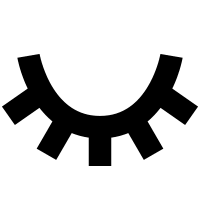.jpg)
Lady With the Ermite
The period known as the High Renaissance spans four decades from 1490 to the end of Rome in 1527. the period of classical humanism were fully rolling in both painting and sculpture, shading and other methods of realism were mastered. While the preceding Early Renaissance had been centred on Florence and largely paid for by the Medici family, the High Renaissance was centred on Rome and paid for by the Popes. Florence and Rome were rivals throughout the Renaissance period. Both states were very prosperous and regarded as centers of culture. They became key locations of the European Grand Tour three centuries later. Rome finally succeeded Florence because of the Popes’ desire to glorify the holy city. It almost went bankrupt due to so many commissions. It also sees artists illegally dissected bodies for the sake of accuracy. For example the vitruvian man. Leonardo and Michelangelo famously studied anatomy this way. During this period, only physicians had permission to perform dissections. Throughout its beauty the High Renaissance aesthetic was contradictory to itself. Many techniques developed to make paintings as realistic as possible. These include chiaroscuro, foreshortening, linear perspective, illusionistic devices, and aerial perspective.
Leonardo was an unschooled man, who was also a convict. He was notorious for not finishing work because he was so slow at finishing them. Even though he was a painter, architect, inventor, and student of all things scientific, He is best known for his art, including two paintings that remain among the world’s most famous and admired, mona lisa and the last supper. As for his love of science Leonardo dissected corpses to ensure that he was being accurate.
the hundreds of notebook pages belonging to leonardo that have survived time reveal a habit of the artist... he wrote in mirror script, reversing his handwriting so it would only be readable if the page was held up to a mirror. He did this because he was left handed and he could avoid smearing or erasing the chalk by writing in reverse.
It assumed that da Vinci’s composition had always included the white ermine, but a three year-long investigation had revealed that the Italian artist actually painted the work not in one, but in three differentiated stages. His first version was a simple portrait, with no animal. In the second, the painter included a small grey ermine. In the third and final stage, the animal was transformed into a large white ermine. The picture is 40.3 cm wide and 54.8 cm high, oil on walnut board. the original background has been overlaid probably in the 17th c. The subject of the portrait is Cecilia Gallerani, and was painted at a time when she was the mistress of Lodovico Sforza, Duke of Milan. Lady with an Ermine has been heavily re-painted. The entire background has been darkened, her dress below the ermine was retouched.


